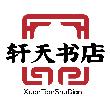
【全新正版】 本体与词汇库(自然语言处理角度的解析)/计算语言学与语言科技原文丛书
全新正版图书,支持七天退换,可开具电子发票。
¥ 41.28 6.8折 ¥ 61 全新
库存2件
上海黄浦
认证卖家担保交易快速发货售后保障
作者黄居仁//(意)Nicoletta Calzolari//Aldo Gangemi//Alessandro Lenci//Alessandro Oltramari等|主编:黄居仁
出版社北京大学
ISBN9787301249543
出版时间2014-12
装帧其他
开本其他
定价61元
货号3112259
上书时间2024-06-29
- 最新上架
商品详情
- 品相描述:全新
- 商品描述
-
目录
导读
Contributors
Preface
Part Ⅰ Fundamental aspects
1 Ontology and the lexicon: a multidisciplinary perspective
1.1 Situating ontologies and lexical resources
1.2 The content of ontologies
1.3 Theoretical framework for the ontologies/lexicons interface
1.4 From ontologies to the lexicon and back
1.5 Outline of chapters
2 Formal ontology as interlingua: the SUMO and WordNet linking project and global WordNet
2.1 WordNet
2.2 Principles of construction of formal ontologies and lexicons
2.3 Mappings
2.4 Interpreting language
2.5 Global WordNet
2.6 SUMO translation templates
3 Interfacing WordNet with DOLCE: towards OntoWordNet
3.1 Introduction
3.2 WordNet's preliminary analysis
3.3 The DOLCE upper ontology
3.4 Mapping WordNet into DOLCE
3.5 Conclusion
4 Reasoning over natural language text by means of FrameNet and ontologies
4.1 Introduction
4.2 An introduction to the FrameNet lexicon
4.3 Linking FrameNet to ontologies for reasoning
4.4 Formalizing FrameNet in OWL DL
4.5 Reasoning over FrameNet-annotated text
4.6 Linking FrameNet to SUMO
4.7 Discussion
4.8 Conclusion and outlook
5 Synergizing ontologies and the lexicon: a roadmap
5.1 Formal mappings between ontologies
5.2 Evaluation of ontolex resources
5.3 Bridging different lexical models and resources
5.4 Technological framework
Part Ⅱ Discovery and representation of conceptual systems
6 Experiments of ontology construction with Formal Concept Analysis
6.1 Introduction
6.2 Basic concepts and related work
6.3 Dataset selection and design of experiments
6.4 Evaluation and discussion
6.5 Conclusion and future work
7 Ontology, lexicon, and fact repository as leveraged to interpret events of change
7.1 Introduction
7.2 A snapshot of OntoSem
7.3 Motivation for pursuing deep analysis of events of change
7.4 Increase
7.5 Content divorced from its rendering
7.6 NLP with reasoning and for reasoning
7.7 Conclusion
8 Hantology: conceptual system discovery based on orthographic convention
8.1 Introduction: hanzi and conventionalized
conceptualization
8.2 General framework
8.3 Conceptualization and classification of the radicals system
8.4 The ontology of a radical as a semantic symbol
8.5 The architecture of Hantology
8.6 OWL encoding of Hantology
8.7 Summary
8.8 Conclusion
9 What's in a schema?
9.1 Introduction
9.2 An ontology for cognitive linguistics
9.3 The c.DnS ontology
9.4 Schemata, mental spaces, and constructions
9.5 An embodied semiotic metamodel
9.6 Applying Semion to FrameNet and related resources
9.7 Conclusion
Part Ⅲ Interfacing ontologies and lexical resources
10 Interfacing ontologies and lexical resources
10.1 Introduction
10.2 Classifying experiments in ontologies and lexical resources
10.3 Ontologies and their construction
10.4 How actual resources fit the classification
10.5 Two practical examples
10.6 Available tools for the ontology lexical resource interface
10.7 Conclusion
11 Sinica BOW (Bilingual Ontological WordNet):integration of bilingual WordNet and SUMO
11.1 Background and motivation
11.2 Resources and structure required in the BOW approach
11.3 Interfacing multiple resources: a lexicon-driven approach
11.4 Integration of multiple knowledge sources
11.5 Updating and future improvements
11.6 Conclusion
12 Ontology-based semantic lexicons:mapping between terms and object descriptions
12.1 Introduction
12.2 Why we need semantic lexicons
12.3 More semantics than we need
12.4 The semantics we need is in ontologies
12.5 Conclusion
13 Merging global and specialized linguistic ontologies
13.1 Introduction
13.2 Linguistic ontologies versus formal ontologies
13.3 Specialized linguistic ontologies
13.4 The plug-in approach
13.5 Experiments
13.6 Applications and extensions
13.7 Conclusion
Part Ⅳ Learning and using ontological knowledge
14 The life cycle of knowledge
14.1 Introduction
14.2 Using ontolexical knowledge in NLP
14.3 Creating ontolexical knowledge with NLP
14.4 Conclusion
15 The Omega ontology
15.1 Introduction
15.2 Constituents of Omega
15.3 Structure of Omega
15.4 Construction of Omega via merging
15.5 Omega's auxiliary knowledge sources
15.6 Applications
15.7 Omega 5 and the OntoNotes project
15.8 Discussion and future work
15.9 Conclusion
16 Automatic acquisition of lexico-semantic knowledge for question answering
16.1 Introduction
16.2 Lexico-semantic knowledge for QA
16.3 Related work
16.4 Extracting semantically similar words
16.5 Using automatically acquired role and function words
16.6 Using automatically acquired categorized NEs
16.7 Evaluation
16.8 Conclusion and future work
17 Agricultural ontology construction and maintenance in Thai
17.1 Introduction
17.2 A framework of ontology construction and maintenance
17.3 Ontology acquisition from texts
17.4 Ontology acquisitions from a dictionary and a thesaurus
17.5 Integration into an ontological tree
17.6 Conclusion
References
Index
内容摘要
黄居仁、Nicoletta、Calzolari、Aldo、
Gangemi、Alessandro、Lenci、Oltramari等编著的《本体与词汇库(自然语言处理角度的解析)》为全面论述本体和词汇库以及两者界面建构的第一本专著,内容涵盖理论和实践两个方面的研究成果。
本书分为四大部分。第一部分从基础知识出发,共有五个章节。作为基础介绍,第一章先给出本体与词汇的基本定义,并从理论角度来解释两者之间的界面和交互关系;然后在第二章和第三章介绍两个主要的形式化本体的系统——suMO和DOLCE,并在第二章和第四章给出两个主要的词汇资源库的关系,其中一个是WordNet,另一个FrameNet;第五章作为总结提出本体与词汇交界研究的路线图。
第二部分主要介绍概念体系的建构,共有四个章节,主要集中于本体系统的建构,旨在表明不同的本体建构方法和不同的本体知识。第六章介绍如
何使用形式概念分析(FormalConceptAnalysis)方法,通过文本资源构件本体。第七章讲解如何使用语义知识,包括本体、词汇以及事件知识,来追踪和识别事件的变化。第八章介绍一个汉字意符的本体知识建构,用于中文书写系统的形式化描述方法以及称为Hantology的汉字意符的本体知识体系系统。第九章提出一个基于认知语言学可用于概念体系建构的元模型(metamodeling)。
第三部分主要介绍本体和词汇资源界面的建构,共有四个章节。第十章主要讲解与综述本体和词汇资源交互使用时所面对的理论和实际的问题。
第十一章介绍台北“中研院”开发的中英双语的本体词汇知识库SINI—CA-BOW。第十二章指出用传统方法建构语义词库的困难,并提出在实际应用中,应采取先建立该应用领域的本体知识,之后将相关的词汇映射到本体的方法,从而避免建构冗余的语义消歧信息。第十三章讲解由于不同的语言
学本体(1inguisticontology)在建构时会有不同的颗粒度,提出通过建构综合本体(globalontology)的方法,来避免交互操作时所要面对的颗粒度整合问题。
第四部分集中讨论自然语言处理应用的相关问题,共有四个章节。第十
四章讲解本体知识的生成和知识在自然语言中的应用是知识生命周期的有机组合,互为依存。第十五章介绍Omega,一个浅层
的基于词汇的术语分类系统。第十六章介绍如何获取词汇语义信息来提升问答系统的性能。第十
七章介绍一个基于泰文的农业相关本体的半自动建构。
— 没有更多了 —












以下为对购买帮助不大的评价